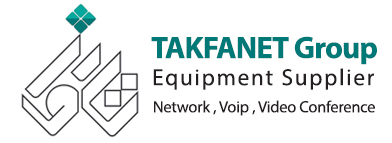What is SIP Trunking?
 SIP Trunking
SIP Trunking
SIP, or Session Initiation Protocol, is the standard communications protocol for voice and video in a Unified Communications (UC) solution across a data network. A SIP trunk replaces the need for traditional analog, T1-based Public Switched Telephone Network (PSTN) connections with termination instead provided over a company’s public or private Internet connection through a SIP provider. These SIP providers, often referred to as Internet Telephony Service Providers (ITSP), provide PSTN service on a per minute or channelized pricing model.
The per-minute pricing model is fairly self-explanatory, with a set rate per minute of usage. A channelized pricing model typically provides nearly unlimited minutes on a set number of channels, or call paths. For example, a company can purchase 10 channels and make use of unlimited minutes on those channels, but can only have 10 simultaneous calls.
Many companies already use VoIP within their PBX on the Local Area Network (LAN) to connect to IP phones. SIP Trunking also uses VoIP to take advantage of shared lines, such as a company’s Internet connection, to allow more flexibility in communications. Traditional legacy systems, that aren’t already VoIP-capable, can be connected using common VoIP gateways to take advantage of SIP trunking and reap the significant cost benefits.
The Benefits of SIP Trunking
The cost savings and communications benefits of SIP trunking are substantial. Your company is most likely experiencing high costs with an existing PBX, while still having the constraints of the limited communications technology provided by your current Telco. High costs may be incurred through a combination of monthly phone bills, which include charges for incoming phone lines, long distance charges and IT and maintenance fees, all of which can be drastically reduced or eliminated by a SIP Trunking provider.
SIP Trunking allows companies to only pay for the number of lines they need as opposed to getting locked in to excess analog lines or partially-used T1s and PRIs. The savings are realized either by purchasing only the necessary number of channels, or by paying only for minutes used. This allows companies to make more efficient use of communications costs and reduce or eradicate wasted resources.
SIP Trunking eliminates the physical connection to a phone company. There are no hardware, wiring, or circuit boxes to maintain for connection to the PSTN. Reducing multiple phone lines into a single point of entry drastically reduces charges for incoming lines and the IT cost associated with the maintenance of those lines. (Some organizations prefer to maintain standard lines for faxes and alarms.)
A phone number, or Direct Inward Dialing number (DID), is less expensive when purchased with a SIP Trunk. Traditionally, when a DID is obtained from a phone company, charges are applied for the DID, IT and maintenance services, and the hardware connecting the shared physical lines or channels. A DID provided without these infrastructure costs is more affordable.
SIP Trunking with VoIP increases reliability of services by providing a level of redundancy. When system failures and emergencies occur, SIP Trunking providers can reroute services to a redundant data line or forward the PBX to mobile phones to keep your business up and running.
